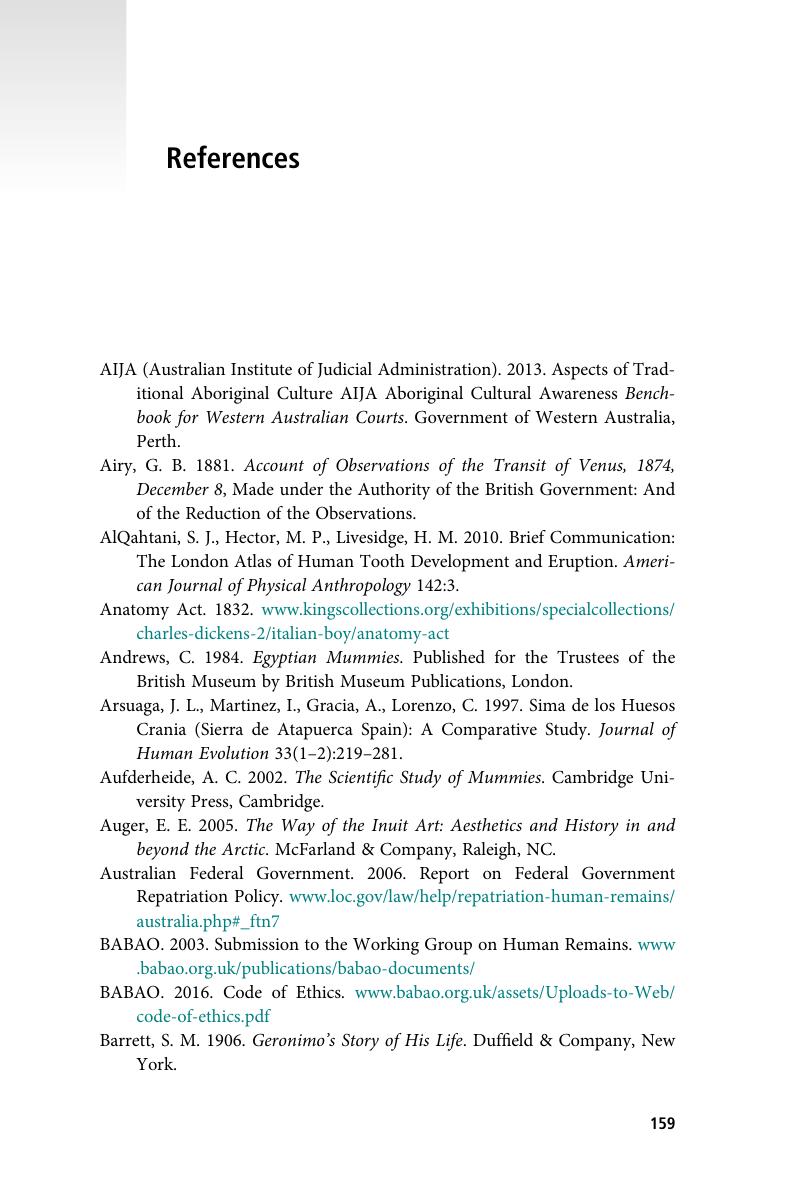Book contents
- Human Remains
- Cambridge Texts in Human Bioarcheology and Osteoarchaeology
- Human Remains
- Copyright page
- Contents
- Introduction
- 1 A History of Human Remains in Museum and Other Collections
- 2 Human Remains and Scientific Research
- 3 The Legal Aspects of Human Remains
- 4 Ethical Considerations for Human Remains
- 5 Good Practice in Curating Human Remains
- 6 Other Belief Systems and the Care of Human Remains
- 7 A History of Repatriation
- 8 Repatriation Today
- 9 The Importance of Provenance
- 10 Reburial and the Alternatives
- 11 Where Do We Go from Here?
- Answers
- References
- Index
- References
References
Published online by Cambridge University Press: 28 February 2020
- Human Remains
- Cambridge Texts in Human Bioarcheology and Osteoarchaeology
- Human Remains
- Copyright page
- Contents
- Introduction
- 1 A History of Human Remains in Museum and Other Collections
- 2 Human Remains and Scientific Research
- 3 The Legal Aspects of Human Remains
- 4 Ethical Considerations for Human Remains
- 5 Good Practice in Curating Human Remains
- 6 Other Belief Systems and the Care of Human Remains
- 7 A History of Repatriation
- 8 Repatriation Today
- 9 The Importance of Provenance
- 10 Reburial and the Alternatives
- 11 Where Do We Go from Here?
- Answers
- References
- Index
- References
Summary

- Type
- Chapter
- Information
- Human RemainsCuration, Reburial and Repatriation, pp. 159 - 170Publisher: Cambridge University PressPrint publication year: 2020



